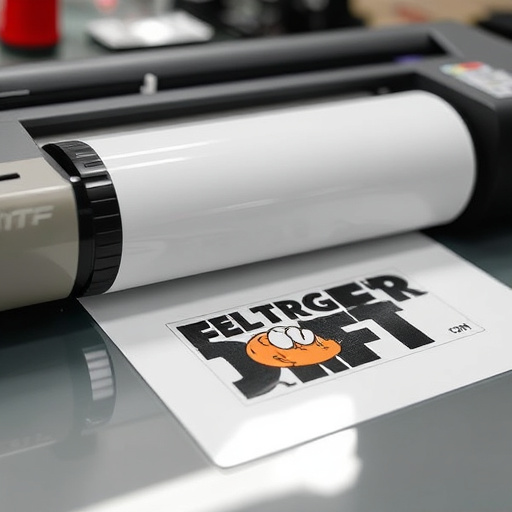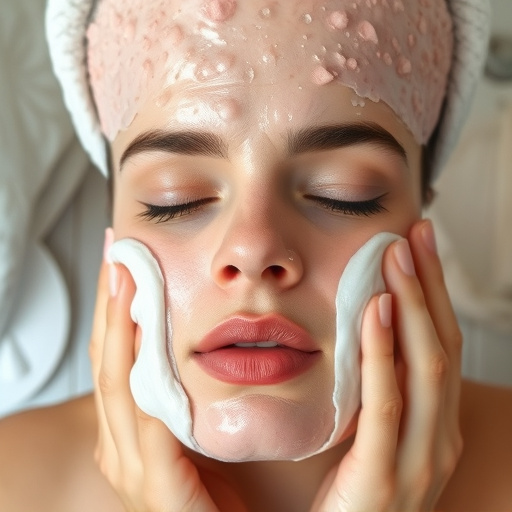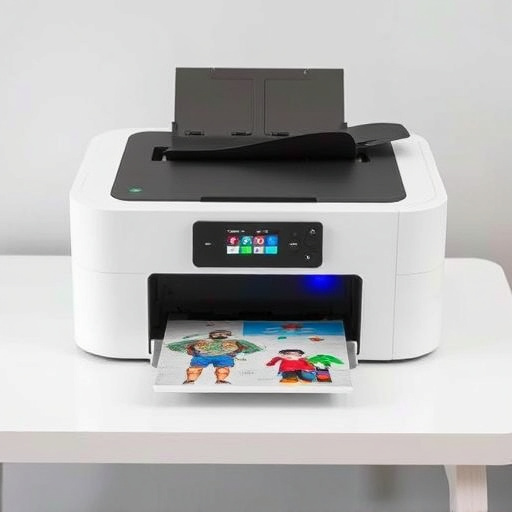DTF water-based inks revolutionize textile printing with vibrant, long-lasting results on lighter fabrics. Paired with white underbase layers, they offer exceptional quality for intricate designs and prevent show-through. Understanding ink-underbase compatibility ensures outstanding results in apparel production. These inks enhance vibrancy, opacity, and detail, ideal for personalized hoodies and text-heavy designs. Proper substrate preparation, print settings optimization ensure durability and accurate detail reproduction.
Discover the versatility and superior performance of DTF water-based inks, especially when combined with white underbase layers. This innovative approach offers a range of benefits, from enhanced color vibrancy to improved print quality and faster drying times. Learn how these techniques can revolutionize your printing process, ensuring optimal results every time. Explore effective strategies and unlock the full potential of DTF water-based inks for your next project.
- Understanding Water-Based DTF Inks
- Benefits of Using White Underbase Layers
- Effective Techniques for Optimal Results
Understanding Water-Based DTF Inks

DTF Water-based inks are a game-changer in the world of textile printing. These specialized inks are designed to work seamlessly with specific substrates, offering vibrant and long-lasting results. The ‘water-based’ aspect refers to their composition, which includes a significant proportion of water, making them environmentally friendly and easy to handle compared to traditional solvent-based inks. This makes DTF water-based inks an excellent choice for various applications, especially when printing on light fabrics.
When considering DTF printing, the use of white underbase layers is a key technique to enhance the overall quality. A white underlayer acts as a base, ensuring the ink adheres well and providing a crisp, clear print on lighter materials. This is particularly beneficial for intricate designs or when using transparent or light-colored inks, as it prevents show-through and creates a vibrant, professional finish. Understanding the compatibility between water-based DTF inks and white underbase layers is crucial for achieving optimal results in the dtf transfer film process, ensuring the printed design stands out on various fabric types, including those commonly used in apparel production.
Benefits of Using White Underbase Layers

Using white underbase layers with DTF Water Based Inks offers a multitude of advantages for printers and designers alike. Firstly, it enhances the vibrancy and opacity of the final print, ensuring that colors are rich and detailed. This is particularly beneficial when creating intricate designs or personalized items like direct to film personalized hoodies, where every shade needs to be accurately represented.
Additionally, white underbase layers serve as a versatile foundation for various printing techniques. They enable printers to achieve sharp outlines and fine line details, making them ideal for text-heavy designs or complex patterns often seen in bulk DTF shirt production. This layer also acts as a barrier between the ink and the fabric, preventing bleed through, which is a common issue when printing on darker or highly absorbent materials.
Effective Techniques for Optimal Results

For optimal results when using DTF Water Based Inks with white underbase layers, several effective techniques can be employed by users of direct to film (DTF) printers. One key practice is to prep the substrate thoroughly before application. This involves ensuring the surface is clean, free from oils and contaminants, and properly primed to accept the ink. A good underbase layer acts as a barrier between the design and the substrate, improving durability and preventing bleeding or smudging.
Additionally, understanding the specific properties of DTF Water Based Inks is crucial. These inks are known for their vibrant colors and excellent adhesion, but they require careful handling. Users should adhere to recommended print settings, including temperature and pressure adjustments, to ensure optimal ink transfer during the dtf transfer process. This precision ensures that intricate details and fine lines are accurately reproduced while minimizing the risk of ink cracking or peeling over time.
DTF water-based inks have proven to be a versatile and effective choice for print enthusiasts. By employing white underbase layers, printers can achieve exceptional results, ensuring vibrant colors and precise details in their designs. Understanding the unique properties of these inks and mastering the techniques outlined in this article will enable artists and professionals alike to unlock the full potential of DTF printing, creating stunning artwork with ease.














